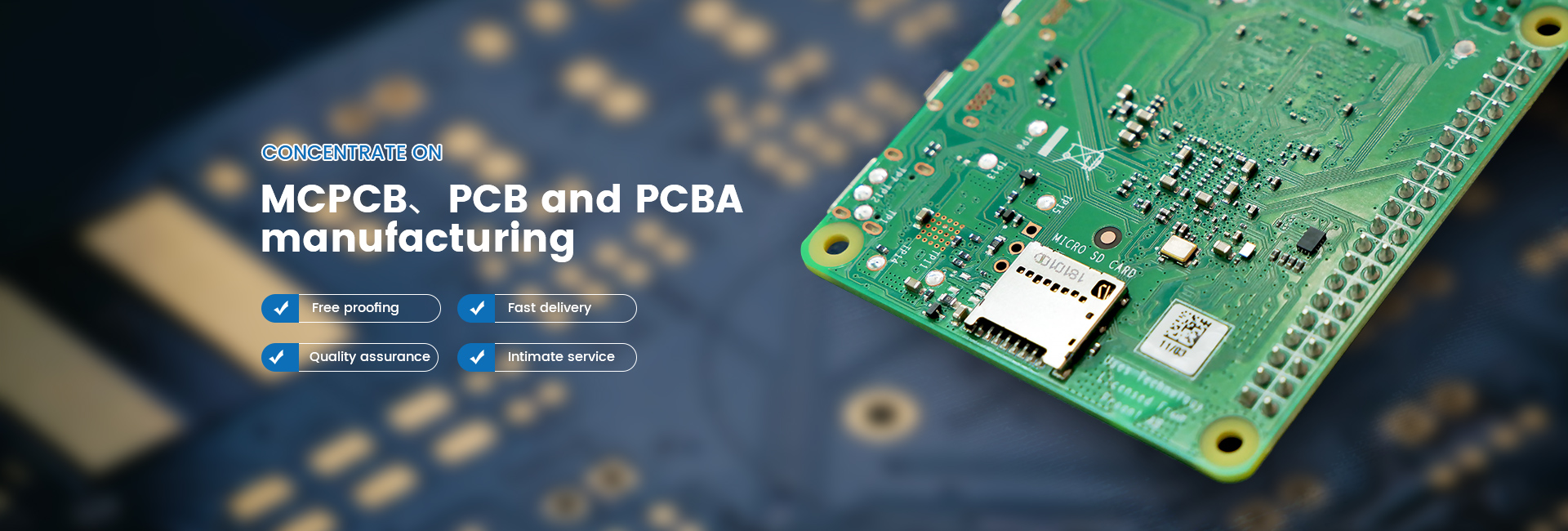Time:2022-10-19 Visit:
At present, printed circuit boards are still the main assembly method for electronic equipment and systems. Practice has proved that even if the circuit schematic design is correct, the printed circuit board design is improper, it will have adverse effects on the reliability of electronic equipment.

Therefore, in the design of printed circuit board, should pay attention to the use of the correct method.
A, grounding
Grounding is an important method to control interference in electronic equipment. Most of the interference problems can be solved if the grounding and masking can be correctly combined. The ground wire structure in electronic equipment is roughly systematic, shell ground (screen ground), digital ground (logic ground) and analog ground.
The following points should be noted in the design of ground wire
In the low-frequency circuit, the working frequency of the signal is less than 1MHz, the wiring and the inductance between the devices have little influence, and the circulation formed by the grounding circuit has great influence on the interference, so the one-point grounding should be used. When the signal working frequency is greater than 10MHz, the impedance of the ground cable becomes large. In this case, reduce the impedance of the ground cable as much as possible and use the nearest multi-point grounding. When the operating frequency ranges from 1 to 10 MHZ, the length of ground wire should not exceed 1/20 of the wavelength if one point grounding is used. Otherwise, the multi-point grounding method should be used.
Digital circuit and analog circuit are separated from the circuit board both high-speed logic circuit, and linear circuit, should make them as far as possible to separate, and the ground wire of both do not mix, respectively connected with the power supply ground wire. The ground area of linear circuits should be increased as much as possible. Shenzhen Shenquan Circuit is a high-tech enterprise dedicated to the research and development and production of high precision and high layer PCB and FPC. In order to meet customers' high, precise and precise needs of all kinds of printed circuit boards, we can provide one-stop services from layou design -PCB sample single trial production to medium and large volume production and PCBA electronic manufacturing.
If the ground cable is very thin, the ground potential will change with the current, which will cause the timing signal level of the electronic equipment to be unstable and the anti-noise performance to deteriorate. Therefore, the ground wire should be as thick as possible, so that it can pass through the three allowable currents located in the printed circuit board. If possible, the width of the ground cable should be larger than 3mm.
When designing a ground line system of printed circuit boards consisting only of digital circuits, making the ground line as a closed loop can significantly improve the noise resistance. The reason for this is that there are many integrated circuit components on printed circuit board, especially in case of more components, power consumption due to restrictions of the grounding line thickness, can produce large potential difference on the knot, cause anti-noise ability to drop, if the grounding structure into the loop, would be to reduce the potential difference value, improve the ability to resist noise electronic equipment.
Second, electromagnetic compatibility design
Emc refers to the ability of electronic devices to work cooperatively and effectively in various electromagnetic environments. The purpose of electromagnetic compatibility design is to make the electronic equipment can not only suppress various external interference, so that the electronic equipment can work normally in the specific electromagnetic environment, but also to reduce the electromagnetic interference of the electronic equipment itself to other electronic equipment.
The impact interference of transient current on printed lines is mainly caused by the inductance component of printed wires, so the inductance of printed wires should be reduced as far as possible. The inductance of printed WIRE IS directly proportional to its length and inversely proportional to its width, so a short and fine wire is advantageous for suppressing interference. Signal LINES FOR CLOCK LEADS, LINE DRIVERS, OR BUS DRIVERS OFTEN CARRY LARGE TRANSIENT CURRENTS AND ARE PRINTED AS SHORT AS POSSIBLE. For discrete component circuit, printed wire width in 1.5mm or so, can fully meet the requirements; For integrated circuits, the printed wire width can be selected from 0.2 mm to 1.0mm.
USES the correct wiring strategy USES the equal linear conductor inductance can be reduced, but the mutual inductance between conductor and distributed capacitance increases, the layout of permitting, better use well glyph structure network cabling, specific side lateral approach is printed circuit board wiring, the other side vertical wiring, then at the cross hole is connected with metallized hole.
In order to prevent cross-talk between PCB wires, avoid laying cables equally over long distances and keep the distance between cables wide. Do not cross signal cables with ground cables or power cables. The cross - talk can be effectively suppressed by setting a printed wire to ground between some signal lines which are sensitive to interference. To avoid electromagnetic radiations when high frequency signals pass through printed wires, please note: